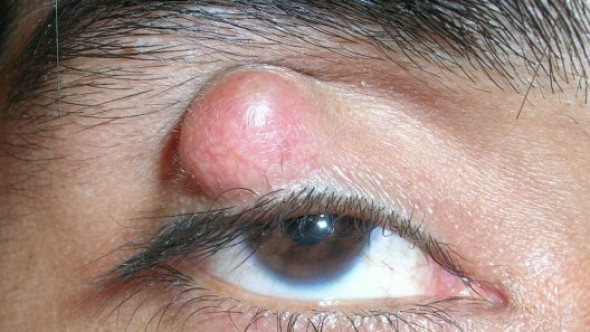What is Chalazion
A chalazion is a slowly developing lump that forms due to blockage and swelling of an oil gland in the eyelid. It is more common in adults than children but can occur in any age.

Initially, a chalazion may appear as a red, tender, swollen area of the eyelid. However, in a few days it changes to a painless, slow growing lump in the eyelid. A chalazion often starts out very small and is barely able to be seen, but it may grow to the size of a pea. Often times they may be confused with styes, which are also areas of swelling in the eyelid.
A stye is an infection of an oil gland in the eyelid. It produces a red, swollen, painful lump on the edge or inside surface of the eyelid. Styes usually occur closer to the surface of the eyelid than do chalazia.
A chalazion is generally not due to an infection, but results from a blockage of the oil gland itself. However, a chalazion may occur as an after-effect of a stye.
Common signs or symptoms of a chalazion include:
- Appearance of a painless bump or lump in the upper eyelid, or, less commonly, in the lower eyelid
- Tearing
- Blurred vision, if the chalazion is large enough to press against the eyeball
Most chalazia disappear without treatment in several weeks to a month. However, they often recur. Rarely, they may be an indication of an infection or skin cancer.
What causes a chalazion?
A chalazion can develop when the oil produced by glands within the eyelids, called the meibomian glands, becomes thickened and is unable to flow out of the gland. The oil builds up inside the gland and forms a lump in the eyelid. Eventually the gland may break open and release the oil into the surrounding tissue causing an inflammation of the eyelid.
Risk factors for the development of a chalazion include:
- Chronic blepharitis, an inflammation of the eyelids and eyelashes
- Acne rosacea
- Seborrhea
- Tuberculosis
- Viral infection
How is a chalazion diagnosed?
A chalazion can be diagnosed through a comprehensive eye examination. Testing, with special emphasis on evaluation of the eyelids, may include:
- Patient historyto determine any symptoms the patient is experiencing and the presence of any general health problems that may be contributing to the eye problem.
- External examination of the eye, including lid structure, skin texture and eyelash appearance.
- Evaluation of the lid margins, base of the eyelashes and oil gland openings using bright light and magnification.
Using the information obtained from testing, your optometrist can determine if you have a chalazion and advise you on treatment options.
How is a chalazion treated?
To facilitate healing, warm compresses can be applied to the eyelid for 10 to 15 minutes 4 to 6 times a day for several days. The warm compresses may help soften the hardened oil that is blocking the ducts thereby promoting drainage and healing. Lightly massaging the external area of the eyelid for several minutes each day may also help to promote drainage.
If the chalazion does not drain and heal then either a specialised injection is given in the swelling or surgical intervention is needed. Minimum local anaesthesia is instilled near the chalazia and it is drained from inside the eyelid, so that no mark remains.